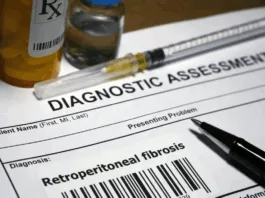Allergic Asthma is a chronic breathing disorder that makes breathing difficult. When you have asthma, your airways become swollen and narrowed. These respiratory symptoms often come and go, but they can become life-threatening during an asthma attack.
What is Allergic Asthma?
Asthma is a lifelong condition that impacts the bronchial tubes in your respiratory tract. These tubes allow air to flow in and out, but asthma can make breathing difficult, leading to symptoms such as coughing and wheezing.
Allergic asthma, also referred to as seasonal asthma or extrinsic asthma, is a specific form of asthma. While it shares many similarities with chronic asthma, the key difference is that allergic asthma occurs at certain times or seasons of the year.
In the United States, allergic asthma affects about 60% of individuals with asthma. This type of asthma is provoked by allergens, which are only present during specific seasons. As a result, the symptoms tend to lessen or completely disappear when the allergens are no longer present.1Pate, C. A., Zahran, H. S., Malilay, J., & Hsu, J. (2022). The shifting prevalence of asthma and allergic disease in US children. Annals of Allergy, Asthma & Immunology, 129(4), 481–489. https://doi.org/10.1016/j.anai.2022.06.030
Causes of Allergic Asthma
Allergic asthma is an immune response. It is what your body experiences in response to an allergen, any substance that causes flare-ups of allergic reactions. The pathogenesis involves several mechanisms, such as:
Immune System Sensitization:
When you first come into contact with an allergen, your immune system incorrectly identifies it as harmful. This leads your immune system to produce IgE antibodies. The IgE attaches to cells in your airways and prepares them for future allergic reactions.
Eosinophilic Infiltration:
In allergic asthma, your immune system produces a T-helper 2 or Th2-mediated response, which leads to the recruitment of eosinophils to the site of inflammation. These cells release toxic proteins that can damage the lining of your airways and increase their sensitivity. The further involvement of white blood cells releases more chemicals that can damage the airway tissues and make them more sensitive to future allergens or irritants.
Immune Response to Re-Exposure:
The next time you inhale the same allergen, the IgE that was already in your airways recognizes it. This causes immune cells to release chemicals like histamine. These substances cause inflammation and lead to the tightening of the muscles around your airways. As a result, they narrow down, and it gets difficult for you to breathe.
Increased Mucus Production:
In addition to swelling, your airways produce extra mucus as part of the allergic reaction. This mucus can clog your already narrowed airways. This exacerbates coughing and wheezing.
Airway Remodeling:
If the inflammation continues over time without proper treatment, the airways may begin to undergo permanent changes called airway remodeling. This makes the airways stiffer and narrower, leading to more frequent asthma attacks and long-term difficulty in controlling the condition.
Increased Sensitivity:
The ongoing inflammation makes your airways more sensitive to even small triggers, like smoke, cold air, or physical exertion. This increase means that your asthma attacks can become more frequent and severe over time.2Agrawal, D. K., & Shao, Z. (2009). Pathogenesis of Allergic Airway Inflammation. Current Allergy and Asthma Reports, 10(1), 39–48. https://doi.org/10.1007/s11882-009-0081-7
What are the allergens in Allergic Asthma?
Asthma is often triggered by allergies to environmental factors, which cause inflammation in your airways. Common triggers of allergic asthma include:
- Dust mites live in your bedding, carpets, and furniture. Their waste can irritate your airways, especially in humid places.
- Cockroaches are commonly found in kitchens and other indoor spaces. Their saliva, droppings, and body parts can trigger allergic asthma symptoms when you inhale them.
- Grass pollen (which is common in spring and summer) can make your allergic asthma worse when the pollen enters your airways.
- Mold, growing in damp areas like bathrooms or basements, releases spores that you can breathe in. This can trigger allergic asthma
- Pet dander refers to tiny flakes from animals like cats and dogs. It can set off an allergic asthma flare-up, even in small amounts.
- Rodents, especially in areas with infestations, release allergens from their droppings, urine, and saliva, which can worsen your allergic asthma.3Chabra, R., & Gupta, M. (2023, August 7). Allergic and Environmentally Induced Asthma. Nih.gov; StatPearls Publishing. https://www.ncbi.nlm.nih.gov/books/NBK526018/
Symptoms of Allergic Asthma
These allergic asthma symptoms may vary from person to person. These can become worse if allergens or triggers are not managed properly.
Wheezing:
This is a common symptom of asthma, where you might hear a high-pitched, whistling sound when you breathe, especially while you’re exhaling. You may notice it more when you’re physically active or during an asthma attack.
Shortness of Breath:
When your airways become inflamed, it can be harder for air to flow in and out of your lungs. This leads to feelings of breathlessness, and you may feel like you’re gasping for air or struggling to take a deep breath.

Coughing:
Frequent coughing, especially bouts at night or early in the morning, is a common sign of asthma. It can be a dry cough or one that produces mucus. In some cases, coughing may be the only symptom you experience, especially during a mild flare-up.
Chest Tightness:
You may feel a sensation of pressure or tightness in your chest, almost like something is squeezing it. This uncomfortable feeling happens during or before an allergic asthma attack.
Increased Secretions:
Allergic asthma can cause your airways to secrete more mucus. The mucus may be thick and sticky. This makes it harder for air to flow freely through your lungs.4Gater, A., Nelsen, L., Fleming, S., Lundy, J. J., Bonner, N., Hall, R., Marshall, C., Staunton, H., Krishnan, J. A., Stoloff, S., Schatz, M., & Haughney, J. (2016). Assessing Asthma Symptoms in Adolescents and Adults: Qualitative Research Supporting Development of the Asthma Daily Symptom Diary. Value in Health, 19(4), 440–450. https://doi.org/10.1016/j.jval.2016.01.007
How is an Allergic Asthma diagnosis established?
Allergic asthma is usually diagnosed clinically. A few investigations can help determine the type of asthma you have and its severity.
History & Physical Examination:
Your doctor will want to know when your allergic asthma symptoms started, how often they show up, and what might trigger them. If you have a medical history of hay fever, eczema, or food allergies, that could be a red flag.
Next, for the physical exam, your doctor will listen to your chest sounds with a stethoscope to check for any abnormal sounds, like wheezing, which is a classic sign of asthma. They might also look for signs of other allergies, like a stuffy nose or skin rashes.
Investigations for Allergic Asthma:
Once your doctor has a sense of your symptoms, they’ll likely move on to tests to confirm the diagnosis. Here are the most common ones:
- Spirometry or pulmonary function tests are often used to diagnose allergic asthma. You’ll be asked to blow into a device that measures how much air you can exhale and how fast. Reduced airflow leads to suspicion of asthma. To double-check, your doctor may give you a bronchodilator drug. If it improves your airflow, it is a good sign that asthma is at play.
- Peak flow measurement measures how quickly you can blow air out of your lungs. If your peak flow is lower than normal, especially during an asthma attack, it can help confirm the diagnosis. It’s a simple way to track your asthma over time, and some people even use a peak flow meter at home.
- Since allergic asthma is triggered by allergens, allergy testing is commonly done. For a skin prick allergy test, small amounts of different allergens are placed on your skin, which is then lightly pricked. If you’re allergic, you’ll get a little bump at the test site. In addition, a CBC can reveal if you have a high IgE count, which could mean you’re allergic to something.
- The exhaled nitric oxide test measures nitric oxide in your breath. These are usually higher when your airways are inflamed.
Imaging:

Your doctor might suggest imaging to rule out other causes of your symptoms. Imaging also shows the severity of asthma.
- In people with long-standing asthma, an X-ray might show signs of hyperinflation in the lungs, meaning they’re stretched due to difficulty exhaling.
- If your asthma is hard to diagnose, or if the symptoms don’t seem typical, an HRCT can provide a detailed view of your lungs.5Asthma Diagnosis. (2024, October 7). Asthma & Allergy Foundation of America. https://aafa.org/asthma/asthma-diagnosis/
What do I need to know about Allergic Asthma treatment?
A variety of allergic asthma medications are available to help you manage your symptoms better. These include:
Rescue Inhalers (Short-Acting Bronchodilators):
These are used when you’re having allergic asthma symptoms, including a worsening attack. They work quickly by relaxing the muscles around your airways so you can breathe better. Their effect lasts for 4 to 6 hours. Common examples include albuterol (like Ventolin or ProAir) and levalbuterol (Xopenex).
Inhaled Corticosteroids:
If you’re using your rescue inhaler too often, your doctor may prescribe daily steroid inhalers. These reduce swelling and inflammation in your lungs and help prevent future symptoms. They’re called controller medications because they manage asthma over time, not just during an attack.
Long-Acting Bronchodilators:
These medications are taken every day and work for about 12 hours. They help keep airways open and reduce asthma symptoms. They’re always used together with inhaled corticosteroids, but never alone. Some inhalers combine both medicines into one device.
Anti-Leukotriene Drugs:
These are pills you take every day to help control long-term asthma. They block the action of leukotrienes, which are chemicals in your body that cause inflammation. Montelukast (Singulair) is the most commonly used one.
Oral Corticosteroids:
These are strong medications used when other treatments aren’t enough during a severe asthma flare-up. They reduce lung inflammation fast but aren’t for regular use because of serious side effects if taken long-term. Prednisone is one example.
Antibody or Biologic Treatments:
If your asthma is severe and not well-controlled with regular treatments, your doctor may suggest injections like omalizumab (Xolair) or mepolizumab (Nucala). These target specific parts of your immune system to reduce allergic reactions and prevent flare-ups.
Immunotherapy:
Immunotherapy includes allergy shots and tablets that can train your body to be less sensitive to allergens over time. You get regular doses of the allergen in small amounts, so your immune system gradually stops reacting. This can help reduce asthma symptoms and may prevent attacks in the long run.6.Hashmi, M. F., & Cataletto, M. E. (2024, May 3). Asthma. Nih.gov; StatPearls Publishing. https://www.ncbi.nlm.nih.gov/books/NBK430901/
How to Manage an Acute Allergic Asthma Attack?
Knowing what to do ahead of time can help you stay calm during an acute allergic asthma attack, such as:
Start Treatment at Home:
If you’re having an asthma attack, use your quick-relief inhaler. Take 2 to 4 puffs, and repeat every 20 minutes up to three times if needed. If you feel better and can breathe more easily, you might be able to manage it at home. If you have a peak flow meter device, check your reading.

When to Go to the Emergency Room:
If your symptoms don’t get better or worsen, go to the emergency room. There, you’ll be given strong asthma medicines like:
- Nebulized albuterol and ipratropium to help open your airways
- Oral or IV steroids to reduce inflammation
- Magnesium sulfate, if you’re not getting better
When to be admitted to a Hospital:
You might need to stay in the hospital if:
- You’re still wheezing or short of breath after treatment
- Your peak flow is less than 80% of your best
- You’re very tired or confused
- Your oxygen level stays low
Supportive Care:
A variety of supportive care measures are taken for allergic asthma once you’re admitted to a hospital:
- If you cannot breathe on your own or your oxygen level stays very low, doctors might put you on oxygen support. This can include a variety of oxygen masks, as well as a ventilator.
- In rare cases, doctors might use a special Heliox gas or anesthesia drugs to help your lungs relax. They’ll avoid using sedatives or painkillers because they can slow down your breathing.7Ortega, V. E., & Izquierdo, M. (2022, March 4). Treatment of Acute Asthma Exacerbations. MSD Manual Professional Edition; MSD Manuals. https://www.msdmanuals.com/professional/pulmonary-disorders/asthma-and-related-disorders/treatment-of-acute-asthma-exacerbations
Side Effects of Allergic Asthma Medication?
While asthma medications help keep your breathing under control, they can come with side effects. It’s important to know what to expect with them because allergic asthma is a lifelong condition. The side effects of allergic asthma medication include:8Sharma, S., Hashmi, M. F., & Chakraborty, R. K. (2023, June 20). Asthma Medications. Nih.gov; StatPearls Publishing. https://www.ncbi.nlm.nih.gov/books/NBK531455/
| Allergic Asthma Medication | Common Side Effects |
| Rescue Inhalers | Headache, Stomach pain, Behavioural changes like mood swings, and insomnia |
| Inhaled Corticosteroids | Muscle cramps, Headache, Palpitations, Increased risk of severe asthma if used alone |
| Long-Acting Bronchodilators | Injection site reactions, headache, fatigue, and possible allergic reactions |
| Anti-Leukotrienes | Weight gain, high blood pressure, mood changes, bone loss, and high blood sugar |
| Oral Corticosteroids | Weight gain, high blood pressure, mood changes, bone loss, high blood sugar |
| Biologics | Local swelling, Itching, Sneezing, Risk of severe allergic reaction |
| Immunotherapy | Injection site reactions, headache, fatigue, and possible allergic reactions |
Self-Care for Allergic Asthma
If you have allergic asthma, everyday choices can help you feel better and avoid flare-ups. These steps for self-care for allergic asthma include:
- Figure out what allergens you’re allergic to. Try to avoid those things as much as you can. Talk to your doctor regarding allergy medications or shots if avoiding triggers isn’t enough.
- Even when you feel fine, use your prescribed controller inhaler every day. It helps prevent flare-ups.
- Always carry your rescue inhaler. Use it if you start to feel tightness, wheezing, or shortness of breath.
- Live in clean settings. Vacuum often using a HEPA filter, wash bedding once a week in hot water, and use allergen-proof covers on your pillows and mattresses.
- Use a peak flow meter if you have one. It helps you catch early signs of an attack even before you feel symptoms.9Yadesa, G., Abera, A., Amme, S., Fetensa, G., Mulisa, D., & Alemu, G. (2024). Self-management practice and associated factors among asthmatic patients on follow-up care at public tertiary hospitals, south west, Ethiopia, 2022. PLOS ONE, 19(8), e0300589. https://doi.org/10.1371/journal.pone.0300589
Conclusion
Allergic asthma is triggered by different allergens, which include pollen, dust mites, and pet dander. It causes a range of respiratory symptoms like wheezing, cough, a tight chest, and shortness of breath. Proper management of allergic asthma includes identifying and avoiding allergens, as well as medications like inhalers and corticosteroids. In case of an acute attack, urgent medical care is required.
Refrences
- 1Pate, C. A., Zahran, H. S., Malilay, J., & Hsu, J. (2022). The shifting prevalence of asthma and allergic disease in US children. Annals of Allergy, Asthma & Immunology, 129(4), 481–489. https://doi.org/10.1016/j.anai.2022.06.030
- 2Agrawal, D. K., & Shao, Z. (2009). Pathogenesis of Allergic Airway Inflammation. Current Allergy and Asthma Reports, 10(1), 39–48. https://doi.org/10.1007/s11882-009-0081-7
- 3Chabra, R., & Gupta, M. (2023, August 7). Allergic and Environmentally Induced Asthma. Nih.gov; StatPearls Publishing. https://www.ncbi.nlm.nih.gov/books/NBK526018/
- 4Gater, A., Nelsen, L., Fleming, S., Lundy, J. J., Bonner, N., Hall, R., Marshall, C., Staunton, H., Krishnan, J. A., Stoloff, S., Schatz, M., & Haughney, J. (2016). Assessing Asthma Symptoms in Adolescents and Adults: Qualitative Research Supporting Development of the Asthma Daily Symptom Diary. Value in Health, 19(4), 440–450. https://doi.org/10.1016/j.jval.2016.01.007
- 5Asthma Diagnosis. (2024, October 7). Asthma & Allergy Foundation of America. https://aafa.org/asthma/asthma-diagnosis/
- 6.Hashmi, M. F., & Cataletto, M. E. (2024, May 3). Asthma. Nih.gov; StatPearls Publishing. https://www.ncbi.nlm.nih.gov/books/NBK430901/
- 7Ortega, V. E., & Izquierdo, M. (2022, March 4). Treatment of Acute Asthma Exacerbations. MSD Manual Professional Edition; MSD Manuals. https://www.msdmanuals.com/professional/pulmonary-disorders/asthma-and-related-disorders/treatment-of-acute-asthma-exacerbations
- 8Sharma, S., Hashmi, M. F., & Chakraborty, R. K. (2023, June 20). Asthma Medications. Nih.gov; StatPearls Publishing. https://www.ncbi.nlm.nih.gov/books/NBK531455/
- 9Yadesa, G., Abera, A., Amme, S., Fetensa, G., Mulisa, D., & Alemu, G. (2024). Self-management practice and associated factors among asthmatic patients on follow-up care at public tertiary hospitals, south west, Ethiopia, 2022. PLOS ONE, 19(8), e0300589. https://doi.org/10.1371/journal.pone.0300589





